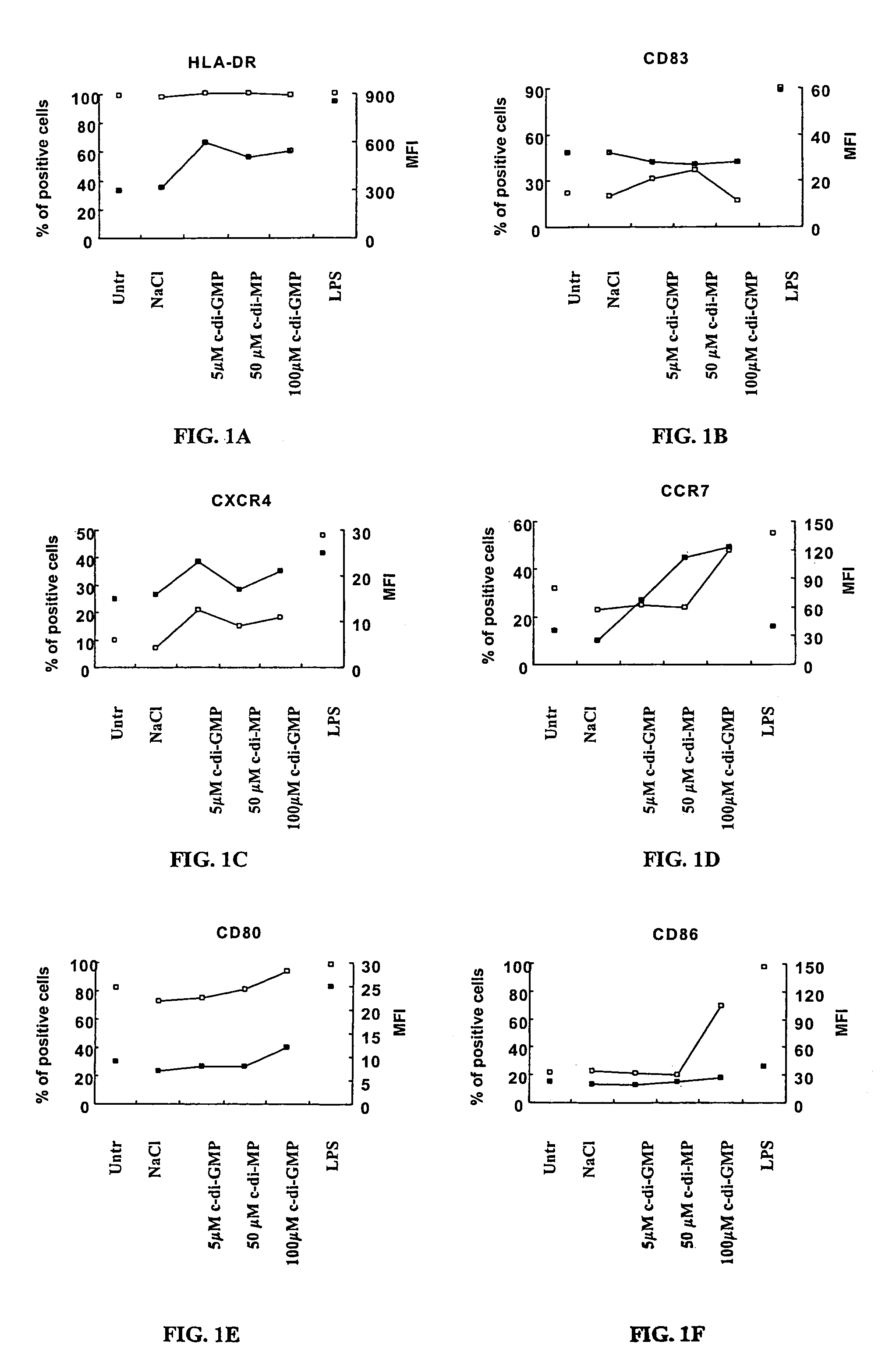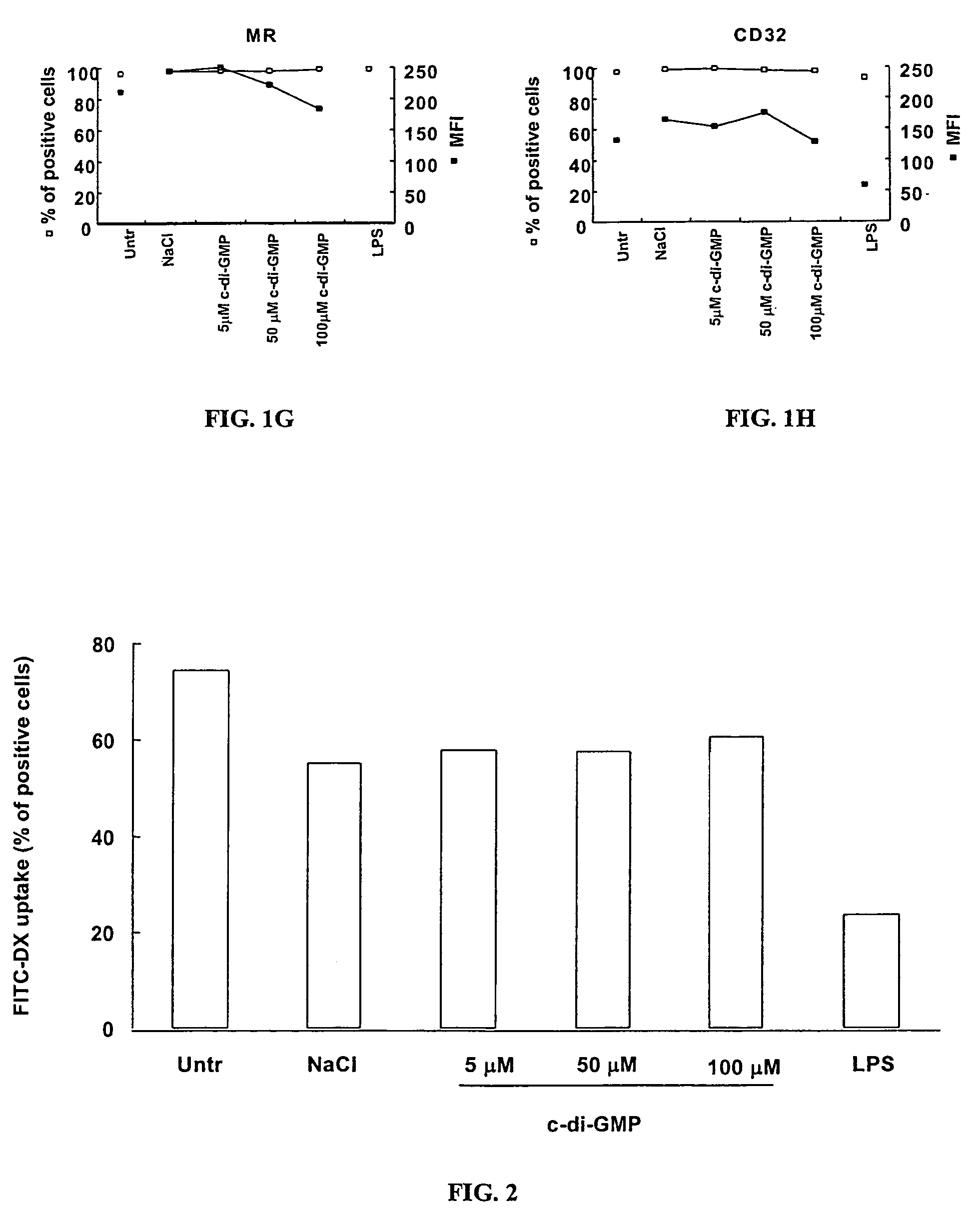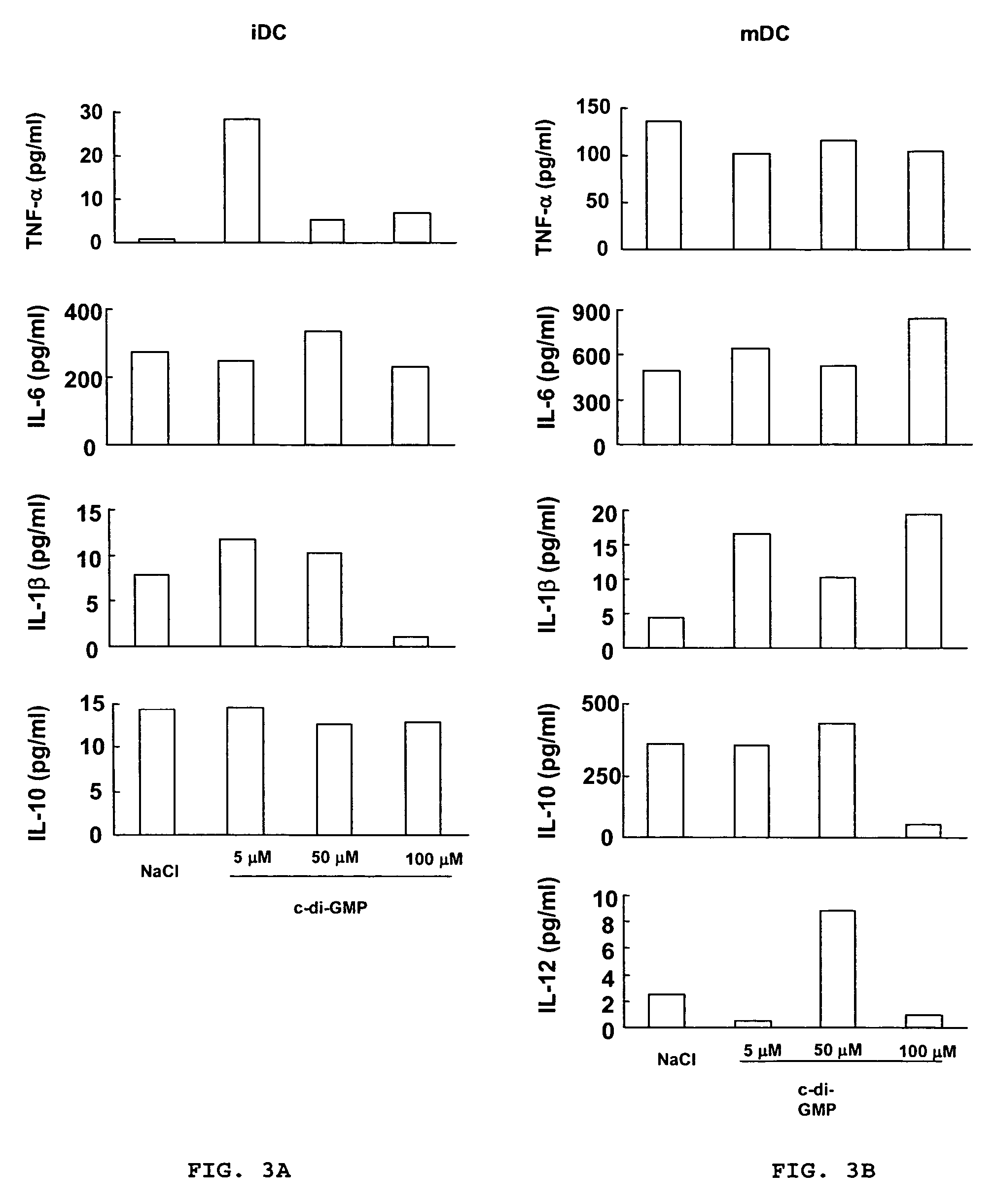Method for stimulating the immune, inflammatory or neuroprotective response
a technology of immune, inflammatory or neuroprotective response and stimulation method, which is applied in the direction of antibody medical ingredients, drug compositions, immunological disorders, etc., can solve the problems of multi-system dysfunction and death, ineffective stimulation of t cells, and damage to the nervous system, so as to inhibit, treat or ameliorate the effect, and inhibit the
- Summary
- Abstract
- Description
- Claims
- Application Information
AI Technical Summary
Benefits of technology
Problems solved by technology
Method used
Image
Examples
example
Preparation of Cell Culture and Treatments
[0107]Peripheral blood mononuclear cells (PBMC) were isolated by Ficoll-Hypaque gradient separation of buffy coats obtained from healthy volunteer blood donors by the Transfusion Center of Universita Degli Studi “La Sapienza” Rome. DCs were generated from monocytes purified from PBMC by positive selection using magnetic cell separation columns and CD14 Microbeads. Highly enriched monocytes (>95% CD14+) were cultured at 6×105 / ml in RPMI 1640 medium supplemented with 15% heat-inactivated fetal calf serum (FCS), L-glutamine and penicillin-streptomycin and 250 ng / ml granulocyte macrophage-colony stimulating factor (GM-CSF) and 500 U / ml interleukin (IL)-4 at 37° C. for 5 days. Differentiation to DC was assessed both by morphologic observation and the detection of specific surface markers by flow cytometry. These cells were CD14−, CD1a+, HLA-DRintermediate, HLA-ABCintermediate, CD80low, CD86low consistent with an immature DC phenotype. Untreated i...
PUM
 Login to View More
Login to View More Abstract
Description
Claims
Application Information
 Login to View More
Login to View More - R&D
- Intellectual Property
- Life Sciences
- Materials
- Tech Scout
- Unparalleled Data Quality
- Higher Quality Content
- 60% Fewer Hallucinations
Browse by: Latest US Patents, China's latest patents, Technical Efficacy Thesaurus, Application Domain, Technology Topic, Popular Technical Reports.
© 2025 PatSnap. All rights reserved.Legal|Privacy policy|Modern Slavery Act Transparency Statement|Sitemap|About US| Contact US: help@patsnap.com



